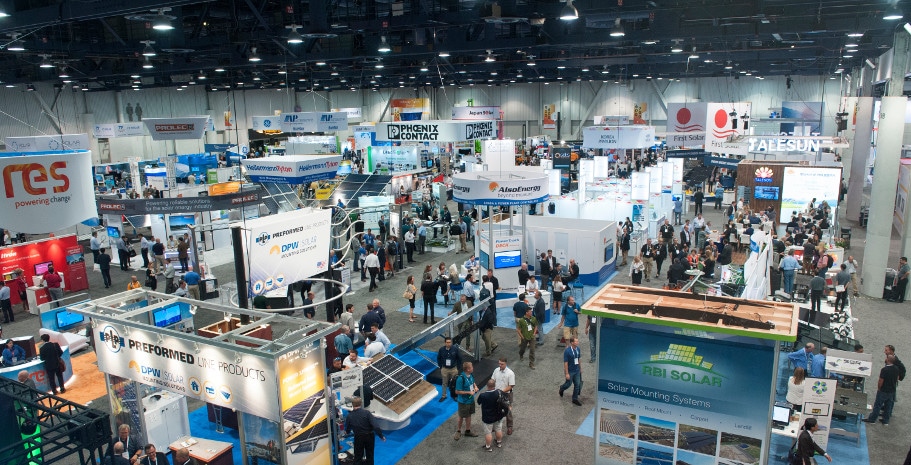Solar Power International (SPI) started its second round of virtual microconferences with something one rarely sees at industry events, particularly when the topic is solar financing — an all-female panel. Kicking off a week of online discussions on financing and development, the Sept. 21 session covered some of the usual topics — the negative impact of the Covid-19 pandemic on tax equity and debt finance deals — but also provided some sharp and savvy insights.
Tax equity notwithstanding, the pandemic has resulted in a strong “secondary market” for projects already in operation, said Jennifer Wiliams, vice president for renewable energy at Live Oak Bank, which focuses on small business financing.
“Market interest is very strong in renewables as a sector because it’s seen as non-correlated with Covid risks, when so many industries — like hotels — have been at risk,” she said. “The financing supplies are higher than ever; rates are low. We’ve seen some projects shift from a structured finance kind of solution to more M&A (mergers and acquisitions) as smaller players couldn’t secure tax equity.”
The uptick in M&A activity was a common theme. Britta von Oesen, managing director at investment bank CohnReznick Capital, said deals were booming in the commercial and industrial sector, with “players just scooping up megawatts.” But, she said, tax equity financing is still available as new stakeholders, such as large tech companies, enter the market.
“There’s such a strong additionality story now from an environmental perspective that having tax equity can be a binary aspect of getting some of these deals done,” she said.
At the other end of the spectrum, Olga Zelenova, chief financial officer at commercial developer Sun Tribe, talked about the pandemic’s negative impacts on one of her company’s core markets, K-12 schools.
“They’re not focused on solar now; they’re focused on how to get our kids back to school,” she said. “I would just prompt us as an industry to help those (customers) — placing solar arrays for their mobile hotspots onsite or working with them on strategically reshaping contracts with a little more liquidity on the front end.”
Different types of solar plants
According to Ravi Manghani, global head of solar for industry analyst Wood Mackenzie, a major challenge facing the industry is how to complete its current 50 GW pipeline of utility-scale projects before the federal investment tax credit takes its final step-down to 10% in 2022. Clearly, the role of innovation will be central, as Manghani and others discussed in a second workshop on Sept. 21.
For Tom Buttgenbach, president and CEO of developer 8minute Solar Energy, storage is the game changer that will drive industry innovation going forward.
Utility-scale plants combining solar and storage are changing “the way we look at how we are designing a power plant,” he said. “Here’s my load; here’s my transmission system. How do I, in the most reliable and cost-effective way, serve my customers? You can start thinking about different types of solar power plants. You can have baseload (or) a solar power plant which deals with a super peak.”
Squeezing out inefficiencies in construction is a key focus for Scott Canada, senior vice president of operations for McCarthy Building Companies Inc., with automation driving innovation in the way projects are built. For example, using GPS systems to help align and set foundations at project sites “allows us to take an entire function and move it into the office,” he said.
“It allows us to take highly skilled folks and put them on a different function on the job site, which allows us to improve quality across the board and reduces the amount of folks in that crew almost in half,” he said.
But, Utopia Hill, vice president of renewables project management for independent power producer Invenergy, also sees ongoing risks in the sheer speed of innovation and solar market growth.
“Every six months we’re seeing something new in the industry,” she said. “So it’s trying to get our arms around — is this new technology something that will last for the next 20 years or 35 years? Is this something where my LCOE (levelized cost of energy) will really come to fruition, and not just a sales pitch from the next company introducing themselves into a very active and hot market?”
This content is protected by copyright and may not be reused. If you want to cooperate with us and would like to reuse some of our content, please contact: editors@pv-magazine.com.








By submitting this form you agree to pv magazine using your data for the purposes of publishing your comment.
Your personal data will only be disclosed or otherwise transmitted to third parties for the purposes of spam filtering or if this is necessary for technical maintenance of the website. Any other transfer to third parties will not take place unless this is justified on the basis of applicable data protection regulations or if pv magazine is legally obliged to do so.
You may revoke this consent at any time with effect for the future, in which case your personal data will be deleted immediately. Otherwise, your data will be deleted if pv magazine has processed your request or the purpose of data storage is fulfilled.
Further information on data privacy can be found in our Data Protection Policy.